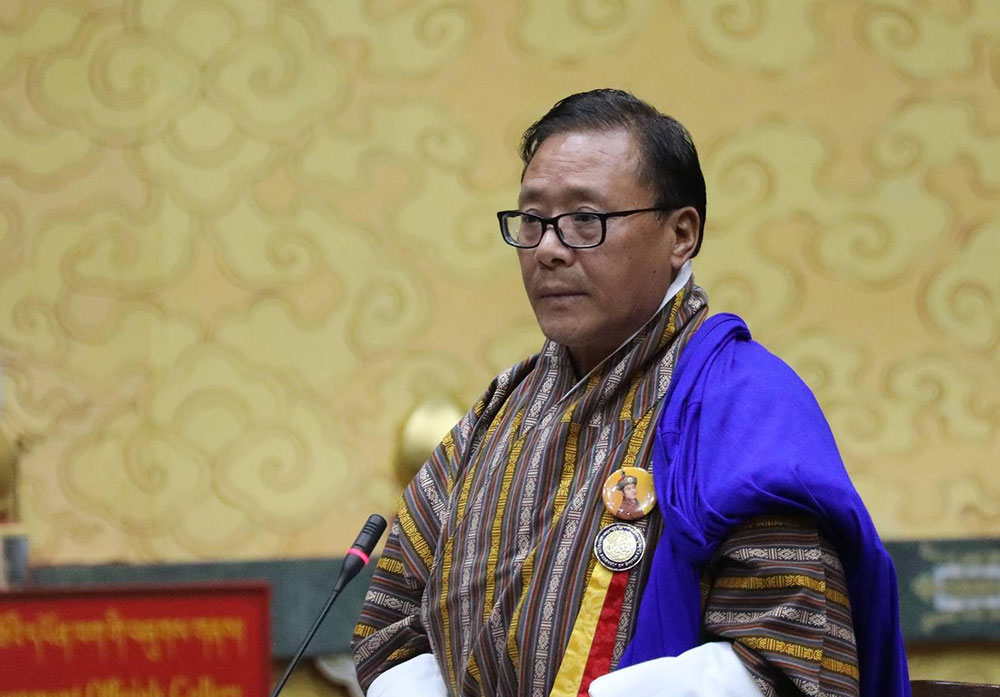
The National Assembly yesterday endorsed the 13th Plan after deliberations on one general and nine specific recommendations by the Economic and Finance Committee.
The House endorsed the Plan with 38 “Yes” votes. One member abstained from voting and three voted “No” out of 42 members present in the House.
The House accepted the committee’s recommendation to include the 13th Plan’s resource allocation mechanism with population data that takes into account both registered and average resident populations.
The House also agreed to allocate separate budget allocations for dzongkhag thromdes with approved local area plan (LAP) in the 13th Plan.
The chairperson of the Economic and Finance Committee and Bartsham-Shongphu MP, Rinchen Wangdi, said that the resources allocated to dzongkhag would not be enough for dzongkhag administration and the identified yenlag throms.
The discussion included that the 13th Plan should have major projects and indicative resource outlay, mandatory policy to allocate one percent of GDP for research and development, and development of a detailed human development master plan.
It also included allocation of dedicated resources for out-of-school and unemployed youth to develop sport facilities and include an economic stimulus programme in the main fiscal framework of the 13th Plan.
To help decision-makers and implementers understand resource allocation trends and provide guidance for projecting future resource requirements, sector-specific resource outlays comparable to the allocation framework reflected in the national budget document of the financial year 2024–25 must be developed.
During the show of hands, the House supported the Committee’s recommendations to eliminate the standard deviation from the resource allocation formula, use uniform criteria for gewog to dzongkhag, thromdes, and gewogs, reduce the weightage of the GNH Index (inverse), and apply weightage similar to that of gewogs.
Presenting the Committee’s recommendation on the 13th Plan, the chairperson of the Economic and Finance Committee, Rinchen Wangdi, said that the resource allocation formula (RAF) in the plan employed different criteria for dzongkhag, gewog, and thromde.
“The Committee is also concerned that assigning a 65 percent weightage to the GNH index (inverse), particularly in the RAF for dzongkhag, has led to skewed allocations,” he said.
The Constitution’s Article 9, Sections 7 and 8 guarantees a more equal and well-rounded allocation of resources.
Rinchen Wangdi recommended the use of uniform criteria for dzongkhag, thromdes, and gewogs, reduce the weightage of GNH index (inverse), and apply the weightage similar to that of gewog.
He added that the use of standard deviation in the formula undermines its intended purpose of fair resource allocation and recommended doing away with it.
According to the 13th Plan’s resource allocation formula, three criteria are considered for dzongkhags, which is 25 percent weightage for resident population, 10 percent for geographical area, and 65 percent for GNH index (inverse).
For gewogs, six criteria, 20 percent for resident population, 10 percent for geographical area, 25 for percent poverty distribution (headcount), 15 percent each for climate change vulnerability analysis index, GNH index, and transportation index are included.
For thromde, 40 percent weightage is allocated for resident population, 20 percent for geographical area, 10 percent each for poverty distribution (headcount), climate change vulnerability analysis index, GNH index (inverse), and unemployment distribution.
Clarifying the Committee’s findings, Finance Minister Lekey Dorji said that allocation of resources for dzongkhag took into consideration the resident population, geographical area, and GNH index (inverse).
Lyonpo said that 65 percent weightage was provided to the GNH index for dzongkhags because the GNH index takes into consideration of nine domains—health, education, living standards, ecological diversity and resilience, good governance, psychological well-being, time use, community vitality, cultural diversity, and resilience.
He added that the GNH index is a good representation since the sample size of 11, 440 was taken from 20 dzongkhags.
Lyonpo Lekey Dorji said that the standard deviation was used to smoothen maximum and minimum allocation to dzongkhags and gewogs by limiting within two standard deviations on both sides of the average allocation to remove outliers.
Otherwise, the budget allocation difference could have been 600 percent across dzongkhags.
Nganglam MP Lamdra Wangdi said that the Pemagatshel was allocated less budget despite having one of the highest population counts in the country.
Similarly, the Dewathang-Gomdar MP, Tshering Penjor, said that Samdrupjhongkhar ranked second in poverty rate and so was given less budget.
With regard to the resource allocation method with three criterion for Pemagatshel, Lyonpo Lekey Dorji clarified the use of standard deviation by stating that the budget allocation will come at Nu 516 million and Nu 435 million with six criteria.
With use of standard deviation, the dzongkhag was allocated Nu 518 million, he argued.
The Committee found that the nation is facing serious concerns of goongtong and satong.
“While most dzongkhags in the west experienced population gain from positive net migration, most dzongkhags in the east witnessed net loss of population,” MP Rinchen Wangdi said.
MPs raised concerns that people migrate to towns for various reasons ranging from employment to education, family move, marriage, and health, among others.
If the issue is not addressed, MPs said that some villages in the country would have no residents at all and that food security and community vitality could disappear at an alarming rate.












